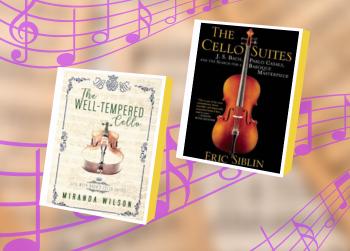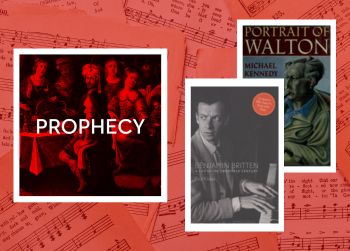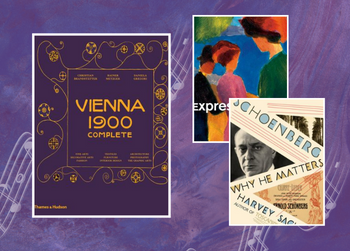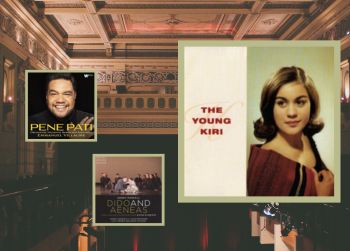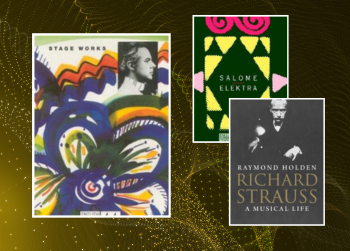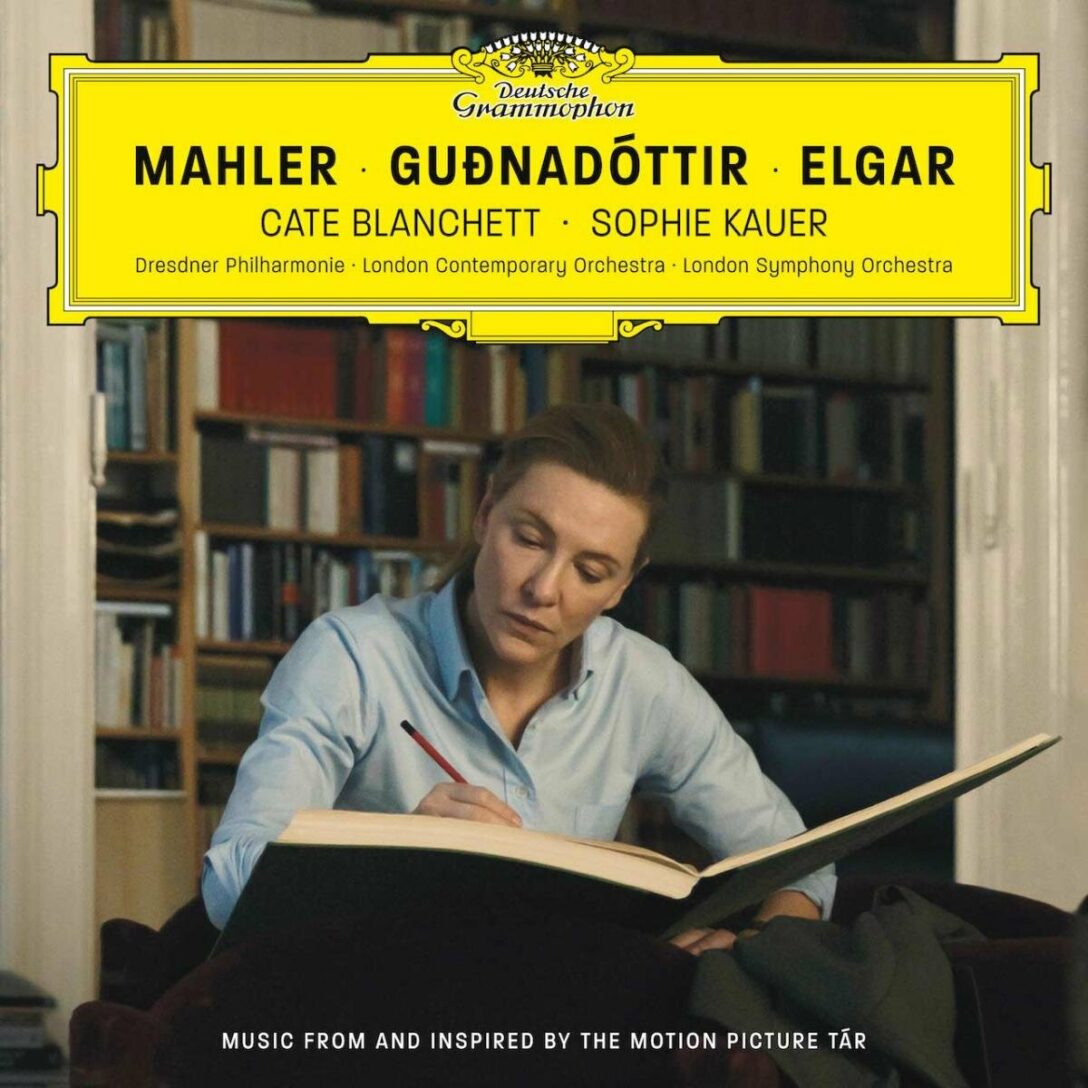NZ Opera’s production of Mozart’s Così fan tutte at the St James Theatre (14—18 June) seemed like the perfect time to display some of WCL’s collection of operatic treasurers at Te Awe Library. Across our branches, and at Te Pātaka, there are many books, CDs, and DVDs concerned with the art form that Samuel Johnson famously called an ‘exotic and irrational entertainment’. This blog introduces some well-known, and some less familiar, highlights that formed part of the Te Awe display.
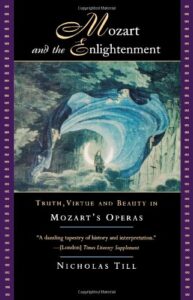 Mozart and the enlightenment : truth, virtue, and beauty in Mozart’s operas / Till, Nicholas
Mozart and the enlightenment : truth, virtue, and beauty in Mozart’s operas / Till, Nicholas
Nicholas Till examines Mozart’s operas through the lens of Enlightenment sensibility, drawing together the strands of history, theology, sociology, literary theory, and even some psychology to anatomize the motivation and vision behind Mozart’s operas. Mozart’s collaborations with librettist Lorenzo da Ponte —Le nozze di Figaro (1786), Don Giovanni (1787) and Così fan tutte (1790) — each receive detailed contextual and musical analysis that considers Mozart’s own intellectual stance on philosophy and politics in that revolutionary decade. Till’s provocative hypotheses and detailed reasoning, combined with his clear fascination with Mozart’s operas, result in a stimulating and highly satisfying exploration of the significance of Mozart’s operas in the eighteenth century and in society today.
The young Kiri : the early recordings, 1964-70 / Te Kanawa, Kiri
This two-disc set of Dame Kiri te Kanawa’s early recordings offers a compelling aural portrait of the young singer, at the start of an extraordinary career. CD 1 is devoted to arias and art song, with Puccini especially well-represented in extracts from La bohème, Tosca, and Turandot, as well as showpiece arias from Johann Strauss’s Die Federmaus and Gounoud’s Faust among other treasures. CD 2 turns to musical theatre and popular song, demonstrating te Kanawa’s versatility in different styles of singing. A number of ensembles and collaborating musicians also make an appearance: the NZBC Orchestra, organist Peter Averi, singer Hohepa Mutu, and harpist Dorothea Franchi.
 Fashion designers at the opera / Matheopoulos, Helena
Fashion designers at the opera / Matheopoulos, Helena
Gianni Versace created a stunning dress for Kiri te Kanawa in Strauss’s Capriccio at the Royal Opera House, Covent Garden in 1990; Zandra Rhodes has designed costumes for Verdi’s Aida, Mozart’s Magic Flute, and Bizet’s Pearl Fishers; the bejeweled gown worn by Mélisande in Debussy’s Pelléas et Mélisande at the Stadttheater Klagenfurt transformed the character into a source of golden light in a world of sinister, oppressive darkness. These are just a few examples of the work that leading fashion designers have produced for opera productions around the world, responding to the challenge of creating costumes in which performers can move and sing. Helena Matheopoulos profiles many many figures from the world in this collection of interviews, sketches, and resplendent full-color illustrations of the costumes in production.
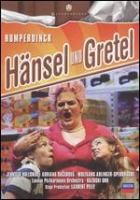 Hänsel und Gretel : opera in three acts
Hänsel und Gretel : opera in three acts
When Richard Strauss conducted the premiere of Engelbert Humperdinck’s Hänsel und Gretel at Weimar in 1893, he declared the piece a ‘masterpiece of the highest quality’. This 2011 production is a musical and visual feast, the action shifted from the terror-ridden Ilsenstein forest to a modern urban setting. Gretel and her brother live in a house of cardboard boxes, which they share with their loving but poverty-stricken parents. Rather than finding a gingerbread cottage, the habitation of Rosine Leckermaul (the witch) is amid the aisles of a supermarket offering every alluring and mass-produced confection. This production is superbly cast, every singer inhabiting the style with energy. Of special note is Wolfgang Ablinger-Sperrhacke’s turn as a matriarchal yet terrifying witch. Humperdink’s music is a captivating fusion of orchestral opulence and gemütlich spirit that draws on more than a century of German Romanticism, from Schubert and Weber to Wagner and Mahler.
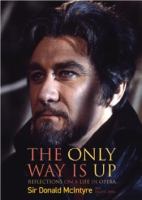 The only way is up : reflections on a life in opera / McIntyre, Donald
The only way is up : reflections on a life in opera / McIntyre, Donald
It is impossible to summarise the career of Donald McIntyre in a paragraph, but fortunately The Only Way is Up more than compensates. A page-turning memoir of life as an aspirant All Black, and then as one of the foremost exponents of Wagner’s music, The Only Way is Up charts the successes and surprises of working on the stages of the Royal Opera House, Covent Garden, and the Festspielhaus at Bayreuth. McIntyre’s stories include appearances by leading conductors, directors, and fellow singers too numerous to mention here, but a particular highlight is McIntyre’s role in Patrice Chereau’s extraordinary ‘Centennial’ Ring Cycle at Bayreuth, a series of productions that revolutionized the staging of Wagner’s music dramas.
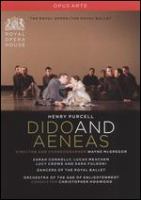 Dido and Aeneas : opera in three acts
Dido and Aeneas : opera in three acts
Purcell’s Dido and Aeneas brings together opera and dance in a collaboration between the Royal Opera, and Royal Ballet at Covent Garden, with the Orchestra of the Age of Enlightenment conducted by John Eliot Gardiner. A musical and visual spectacle, Wayne McGregor’s contemporary choreography fuses with Purcell’s music, realising in the dancers’ movement many of the intricacies in the score. Sarah Connolly (Dido) and Lucas Meachum (Aeneas) imbue their roles with magnificence befitting their royal status, Dido’s descent into despair truly wrenches the heart as she is undone by the witches’ cruelty. Although this production met with mixed responses in 2009, mainly to do with the size of the stage in relation to the intimacy of Purcell’s opera, McGregor’s seems vision is more successful on screen, where the cameras bring us closer to the action.
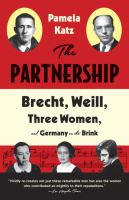 The partnership : Brecht, Weill, three women, and Germany on the brink / Katz, Pamela
The partnership : Brecht, Weill, three women, and Germany on the brink / Katz, Pamela
Although the partnership between Kurt Weill and Bertolt Brecht is well-documented, Pamela Katz is the first author to bring to the fore the roles played by Lotte Lenya, Helene Weigel, and Elizabeth Hauptmann in the creation and performance of Weill and Brecht’s operas. Brech and Weill’s deconstruction and subversion of operatic conventions in The Rise and Fall of the City of Mahagonny and The Threepenny Opera have been the subject of much research and discussion, but the significant involvement and influence of Weigel, Hauptmann, and Lenya in the creative process have never been adequately examined. This book does so, charting the development and early performance history of the operas in the tumultuous years of the Weimar Republic, as well as their creators’ flight from Germany in 1933.
Southern voices : international opera singers of New Zealand / Simpson, Adrienne
Adrienne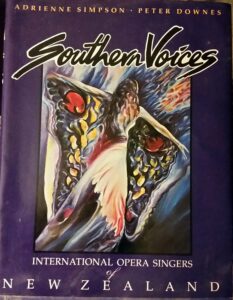 Simpson and Peter Downes dedicated this book to the singers it profiles. Southern Voices is a trove of insights into the careers and reflections of a succession of truly great artists. The singers reflect on their early training and the formative experiences in local choirs and competitions that set them on the path to the most august heights of their profession. Malvina Major’s recollections of her triumph as Rosina in Il barbiere di Siviglia at the 1968 Salzburg Festival, working with Claudio Abbado; Inia te Wiata’s creation of roles in operas by Benjamin Britten; Patricia Payne overcame homesickness and uncertainty at the Opera Centre in London to find musical fulfilment on the concert platform before becoming a soloist with Covent Garden’s permanent company, and a guest soloist in productions all over Europe and the USA; Barry Mora’s successes in many roles over several seasons at Gelsenkirchen, before joining the permanent ensemble at the Frankfurt Opera, where experimental and provocative productions made the company a provocative centre of Regietheater in the 1980s. These stories, and many more, make Southern Voices a fascinating source of history, reinforcing the remarkable achievements of New Zealand singers on the international scene.
Simpson and Peter Downes dedicated this book to the singers it profiles. Southern Voices is a trove of insights into the careers and reflections of a succession of truly great artists. The singers reflect on their early training and the formative experiences in local choirs and competitions that set them on the path to the most august heights of their profession. Malvina Major’s recollections of her triumph as Rosina in Il barbiere di Siviglia at the 1968 Salzburg Festival, working with Claudio Abbado; Inia te Wiata’s creation of roles in operas by Benjamin Britten; Patricia Payne overcame homesickness and uncertainty at the Opera Centre in London to find musical fulfilment on the concert platform before becoming a soloist with Covent Garden’s permanent company, and a guest soloist in productions all over Europe and the USA; Barry Mora’s successes in many roles over several seasons at Gelsenkirchen, before joining the permanent ensemble at the Frankfurt Opera, where experimental and provocative productions made the company a provocative centre of Regietheater in the 1980s. These stories, and many more, make Southern Voices a fascinating source of history, reinforcing the remarkable achievements of New Zealand singers on the international scene.
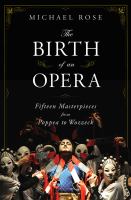 The birth of an opera : fifteen masterpieces from Poppea to Wozzeck / Rose, Michael
The birth of an opera : fifteen masterpieces from Poppea to Wozzeck / Rose, Michael
Michael Rose slices through centuries of myth-making and romanticising to document the creation of fifteen operas, from Monteverdi’s Poppea (first performed in 1643) to Berg’s Wozzeck (1925). Rose examines the manifold complexities of making operas, including the composers’ selection of libretti and collaboration with librettists (for example, the partnerships between Mozart and Lorenzo da Ponte, and Richard Strauss and Hugo von Hofmannsthal), the challenges and benefits of aristocratic patronage, grappling with censors, and parrying hostile critics and cabals. A rich array of primary sources, including exchanges of letters between composers and their collaborators, treatise extracts, and aesthetic manifesti, illuminate the making of Fidelio, Otello, Turandot among other works.
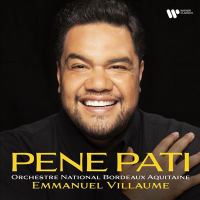 Pene Pati
Pene Pati
Tenor Pene Pati is equally well-known here as an outstanding operatic tenor, and one-third of Sol3Mio.In the last five years, Pati’s career has been spectacularly ascendent. Currently performing the role of Rodolfo in Puccini’s La bohème at the Théâtre des Champs-Élysées in Paris — a role he will reprise in Toronto with the Canadian Opera Company later this year — Pati’s recent schedule has seen him perform in Monte Carlo, Naples, Prague, and Berlin. In 2021, Pati signed an exclusive recording contract with Warner Classics, and this, his debut album, includes extracts from some of the operas in which his recent performances have earned particular acclaim: Verdi’s Rigoletto, Gounoud’s Romeo et Juliette, and Donizetti’s L’Elisir d’amore.
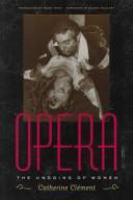 Opera, or, The undoing of women / Clement, Catherine
Opera, or, The undoing of women / Clement, Catherine
A foundational text in feminist musicology, Opera, or, The Undoing of Women (originally published in French as L’Opéra ou la Défaite des femmes in 1979) was contentious when it was first published in French 1979, and remains controversial today. As one of the first critical studies to apply feminist theory to the plots and texts of operas, considering specifically the situation of opera’s female characters, Clément unpicks the fates of Turandot, Cio-Cio San, Lucia, Tatiana, Violetta, Tosca, Isolde. Her analysis identifies several plot and character archetypes, to demonstrate how ’19th-century opera perpetuates a social order which requires either the death or the domestication of the female protagonist.’ Although Clément’s musical analyses are unsophisticated, her poetic language remains compelling, while her arguments remain relevant and provocative nearly 45 years after the book’s first appearance.


